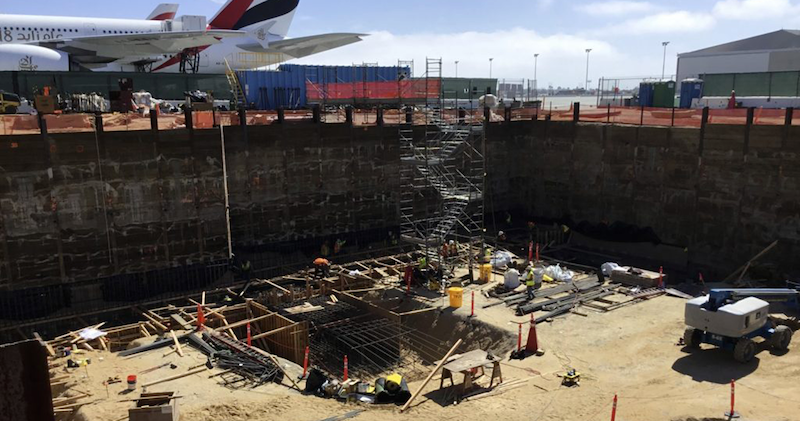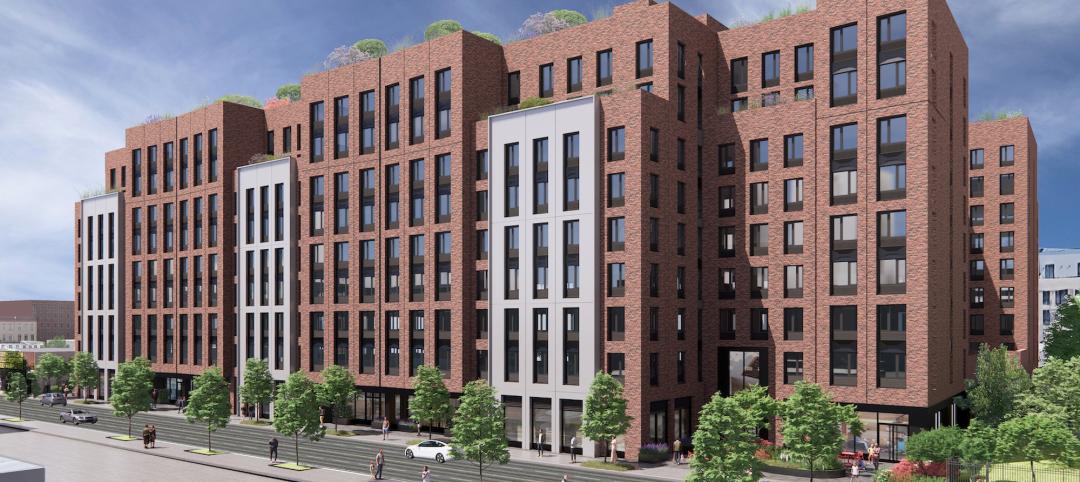Using this method, owners manage only one single source design-build entity contract as opposed to the multiple contracts used in traditional design-bid-build project delivery. Design-build entities are selected based on a procurement process that asks them to develop a design and cost proposal with performance guarantees with either a fixed price or a Guaranteed Maximum Price (GMP).
In the BVS method, a design package is developed based on parameters from the owner, but typically without including the owner’s input in the design process. The method can be successful when it’s guaranteed a project won’t change after the design-build entity is selected, but it can also be inefficient and more costly if the project scope changes.
To remedy some of these inadequacies, owners are turning to a project delivery approach known as “progressive design-build”. Using this method, owners select a team based on the qualifications of the design-builder as opposed to developing a design package, allowing the owner to be more invested in the project right away by being a part of the design process. There is still one contract, like in the traditional design-build approach, but the owner has input in the design/pre-construction phase and the ability to control crucial decisions of scope, schedule and cost. Progressive design-build encourages heightened levels of collaboration between the owner, designer and builder as the design is developed in a step-by-step progression collaboratively:
1. Designer and builder are selected by owner early in the process before any design development. Selection is made on qualifications without a final cost and schedule commitment.
2. The first phase of the project includes design development, preconstruction services and negotiation of a price for the second phase. Decisions are made collaboratively with the owner and design-builder and based on cost, schedule, operations and more.
3. The second phase consists of final design and construction. A final price and schedule are agreed upon and the construction is completed. It is quite common to provide a GMP with multiple sub-trade packages bidout or a fixed price construction cost.
Based on our experience employing progressive design-build on numerous projects, including the Midfield Satellite Concourse at LAX, Pomona Valley Hospital’s Outpatient Pavilion, and the APM Terminal Cores at LAX, here are five ways this new delivery method can bring value to your organization.
Streamlined project selection
In progressive design-build, the design-builder is selected almost exclusively on qualifications, with no design plans or drawings provided upfront. The ability to come up with the best solutions to the project’s challenges becomes the priority, along with letting the design-builder’s expertise in design, sustainability, functionality and successful collaborative project delivery become paramount in selection.
Price is not the main factor when it comes to an owner choosing a team. In traditional BVS design-build, the price proposal is the overarching factor in the selection process and design-builders in the running must submit drawings during the lengthy selection phase. Key design decisions are made during the selection process by the design-build teams in isolation, which may not result in an optimal result. Progressive design-build avoids all these concerns by providing an owner/designer/builder collaborative model for maximum value without contentious relationships.
Increased collaboration
The owner can have a considerable amount of input in design decisions from the start, and the designer and builder are able to offer their expertise throughout the entire process. This ensures the owner is getting what they want out of not only the space, but also the timeline and budget. The owner and the entire design-build entity are all working together seamlessly and making decisions based on the best interests of the project, and not solely what was presented during the BVS process.
 Los Angeles Airport, Midfield Satellite Concourse Gateway Building under construction.
Los Angeles Airport, Midfield Satellite Concourse Gateway Building under construction.More input on subcontractors
In traditional design-build, subcontractors are a package deal – the owner has little or no say in who is picked for subtrades, such as mechanical, electrical, plumbing and others. In progressive design-build, the owner can choose if they want to have input in who is selected either right when a project is awarded or later in the design development process. Typically, this allows owners to use preferred specialty subcontractors and use local expertise. This is also another opportunity for cost savings and near-elimination of change orders.
Better cost transparency
As potential design solutions are submitted, detailed cost estimates are being presented simultaneously to the owner, giving insight into what certain design features and materials will cost and how they may affect the project schedule. Not only does this provide more accuracy, but it also allows the owner to adjust the design to stay on budget. Complex projects such as a replacement hospital are often difficult to price upfront in the typical design-build process. Progressive design-build can better track the cost of a project as it goes through the design process and allows the designer and builder the time to accurately price out a project’s subtrade packages.
In the initial contract, there is a price for design-builder services to complete the preconstruction phase of the project. After that, a guaranteed maximum price (GMP) for finishing the construction is negotiated between all parties, and then the detailed design phase continues. If the owner is not satisfied with the GMP negotiation, they can take what is known as a “progressive design-build off ramp” and use the conventional design-bid-build process for project completion.
Shorter project schedule
Because the owner does not need to spend the time going through design proposals during the selection process, progressive-design build shortens the procurement phase of the project schedule. The owner can also ensure that all the goals of a project will be met before a price is set and final design and construction is underway.
Because of the GMP and potential “off ramp” option, owners have the chance to make the decision to continue with the chosen design-builder and their GMP or reject it without significant project schedule delays. However, the “off ramp” option is not a desired option and it indicates failure of the owner/designer/builder team to adhere to the vision and principles of the progressive design-build delivery model.
Progressive design-build allows owners to be more involved upfront in the design process and choose a team with the qualifications that best fit the project and its goals. The step-by-step design process gives incentive for the owner and design-builder to be equally invested in the project and collaborate on decisions that benefit all parties when it comes to cost, schedule and project outcome. In short, it creates a professional platform for design and build teams to reach successful outcomes.
More from Author
CannonDesign | Sep 20, 2024
The growing moral responsibility of designing for shade
Elliot Glassman, AIA, NCARB, LEED AP BD+C, CPHD, Building Performance Leader, CannonDesign, makes the argument for architects to consider better shade solutions through these four strategies.
CannonDesign | Jan 3, 2024
Designing better built environments for a neurodiverse world
For most of human history, design has mostly considered “typical users” who are fully able-bodied without clinical or emotional disabilities. The problem with this approach is that it offers a limited perspective on how space can positively or negatively influence someone based on their physical, mental, and sensory abilities.
CannonDesign | Oct 23, 2023
Former munitions plant reimagined as net-zero federal workplace
The General Services Administration (GSA) has embraced adaptive reuse with Building 48, an exciting workplace project that sets new precedents for how the federal government will approach sustainable design.
CannonDesign | Aug 22, 2023
How boldly uniting divergent disciplines boosts students’ career viability
CannonDesign's Charles Smith and Patricia Bou argue that spaces designed for interdisciplinary learning will help fuel a strong, resilient generation of students in an ever-changing economy.
CannonDesign | Jul 10, 2023
The latest pediatric design solutions for our tiniest patients
Pediatric design leaders Julia Jude and Kristie Alexander share several of CannonDesign's latest pediatric projects.
CannonDesign | May 11, 2023
Let's build toward a circular economy
Eric Corey Freed, Director of Sustainability, CannonDesign, discusses the values of well-designed, regenerative buildings.
CannonDesign | Apr 10, 2023
4 ways designers can help chief heat officers reduce climate change risks
Eric Corey Freed, Director of Sustainability, CannonDesign, shares how established designers and recently-emerged chief heat officers (CHO) can collaborate on solutions for alleviating climate change risks.
CannonDesign | Mar 9, 2023
5 laboratory design choices that accelerate scientific discovery
Stephen Blair, director of CannonDesign's Science & Technology Practice, identifies five important design strategies to make the most out of our research laboratories.
CannonDesign | Feb 9, 2023
3 ways building design can elevate bold thinking and entrepreneurial cultures
Mehrdad Yazdani of CannonDesign shares how the visionary design of a University of Utah building can be applied to other building types.
CannonDesign | Jan 9, 2023
How modular solutions can help address skyrocketing construction costs
Modular builder Joshua Mensinger details three ways modular solutions aid in lowering construction costs.
















